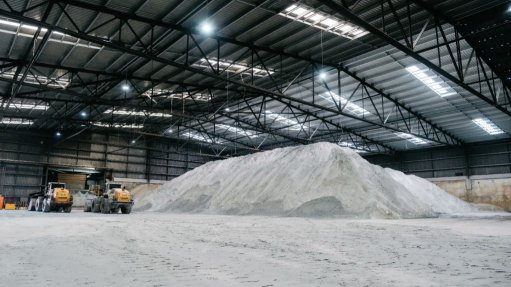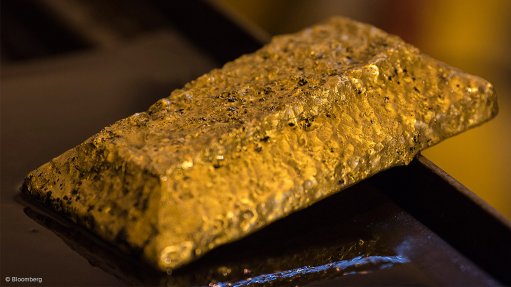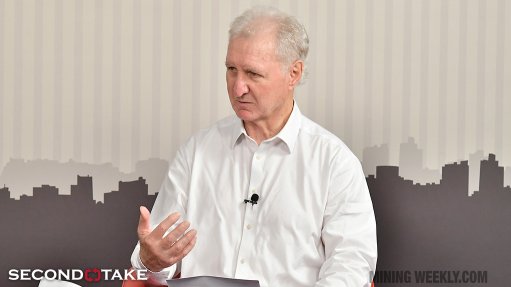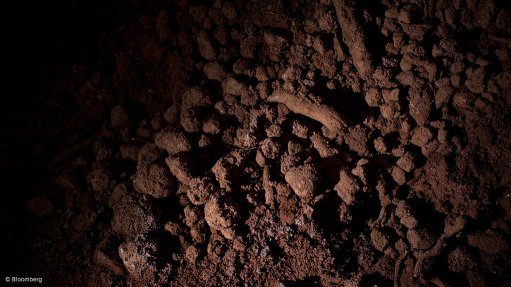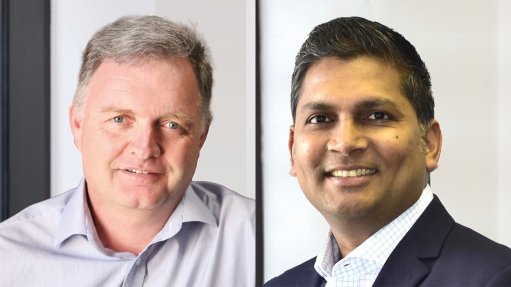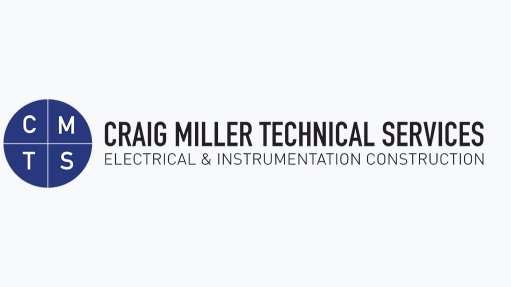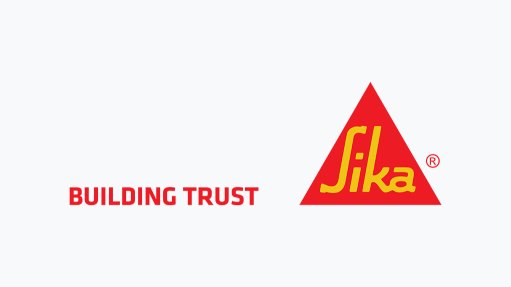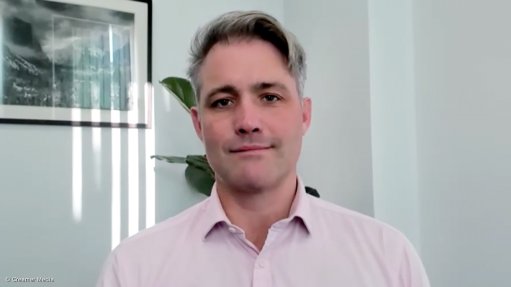Increased interest in XRF, OES from steel sector
Portable X-ray fluorescence (XRF) and Optical Emission Spectroscopy (OES) equipment provider Innov-X-Africa has noted increased interest in its products from the steel sector, with salesperson Craig Bateman observing that the primary applications are for quality control and scarp sorting applications.
Innov-X-Africa, which is affiliated with the South Africa Stainless Steel Development Association (SASSDA) and the South African Institute of Foundrymen, has, in recent months, delivered two XRF analysers to a stainless-steel producer and had worked with a local steel manufacturer in the past, delivering both OES equipment to the manufacturer’s site.
Bateman explains that the XRF differentiates between grades of alloys, which is why it has become popular for scarp sorting applications. “Our customer does a lot of stainless-steel scrap purchasing, and it must be sorted as different grades of stainless steel have different chemical compositions.”
He explains that different grades have varying amounts of chrome, nickel, molybdenum and other valuable elements, and that the incoming scrap must be sorted according to its composition before it is sent to the smelter.
Thereafter, the customer can also use an OES to check the melt, looking for impurities and individual elements at a much lower concentration. “In the actual melt, for example, they wouldn’t want the phosphorus or sulphur concentrations to be low.”
Bateman notes that, a trend over the last year is that, because of the high price of steel and steel products locally, largely owing to high input costs, manufacturers have increased imports for steel and stainless steel, which, in turn, has raised some concerns about quality.
“What’s happening is that, in certain instances, companies are using certificates that state that the product they’ve provided is, for example, 316 grade stainless steel, but because of the high commodity prices, they might have only used the bare minimum of chrome in the production process. So that's where we've seen customers in the manufacturing sector introduce OES and XRF to do a form of grade and quality control to ensure that the steel grade that they have received matches the grade they bought.”
He comments that this is important as, in addition to local manufacturers getting their money’s worth, there is also a reputational risk to using poor quality, or incorrectly labelled products as inputs in their processes.
“They're processing and machining these steels and then sending finished goods to their customer that are sometimes intended for highly specialised applications. If one looks at stainless steel grade 316 and compare it with 304, there is a massive difference, both in terms of price and application. 316 is known for its corrosion resistance, and would therefore last longer in a coastal application, whereas the use of 304, in the same application, might result in a critical failure.”
Bateman adds that the difference in expected and delivered grade quality need not necessarily be a result of unscrupulous companies looking to cut costs, it may also be a case of human error. Regardless of whether the grade discrepancy is intentional, instituting a measure of quality control using XRF and OES can help manufacturers reduce the risk of using poor quality inputs in their processes.
Out with the Old
Bateman explains that portable XRF and OES have numerous benefits.
“Historically, if you have incoming material, employees would have had to cut off a piece and then send it to the laboratory for testing, which tended to be a time-consuming process. And obviously, this also had a higher chance of human error –, mislabelling, sample contamination. There’s also the possibility of poor calibrated lab equipment.”
With XRF and OES, the systems are calibrated internationally, to ensure they meet international standards, before they are delivered to Innov-X-Africa and, therefore, well before they reach the customer. Moreover, the XRF and/or OES equipment can be used on site, and produce results within minutes, depending on the type of sample and the depth of analysis in terms of concentrations, with lower concentrations taking longer.
In terms of limitations, Bateman notes that, certain entry-level XRF equipment is limited in terms of the number of elements it can detect, as well as the range of concentration.
He stresses, however, that the degree of detection depends on the application and the element, as different elements will have different ranges depending on how heavy they are, as well as other properties.
An Eye on the Future
Bateman notes that Innov-X-Africa recently moved to a new premises, as part of its push to expand and improve its overall longevity.
The company has been active in mining throughout sub-Saharan Africa but is looking to increase its footprint in other sectors, such as steel.
“I'm chatting to existing steel producers and foundries and looking to introduce them to all the instrumentation that will hopefully be replacing some of their outdated equipment soon. We want to increase our service and our impact on the South African market, and in sub-Saharan Africa more broadly.
“Our primary focus right now for sub-Saharan Africa is still the Geochem sector, because of the amount of exploration currently taking place for critical minerals and battery metals. I'm sure that, within the next few years, we’ll see more activity in other sectors, and we’ll be there when it happens,” Bateman concludes.
Article Enquiry
Email Article
Save Article
Feedback
To advertise email advertising@creamermedia.co.za or click here
Press Office
Announcements
What's On
Subscribe to improve your user experience...
Option 1 (equivalent of R125 a month):
Receive a weekly copy of Creamer Media's Engineering News & Mining Weekly magazine
(print copy for those in South Africa and e-magazine for those outside of South Africa)
Receive daily email newsletters
Access to full search results
Access archive of magazine back copies
Access to Projects in Progress
Access to ONE Research Report of your choice in PDF format
Option 2 (equivalent of R375 a month):
All benefits from Option 1
PLUS
Access to Creamer Media's Research Channel Africa for ALL Research Reports, in PDF format, on various industrial and mining sectors
including Electricity; Water; Energy Transition; Hydrogen; Roads, Rail and Ports; Coal; Gold; Platinum; Battery Metals; etc.
Already a subscriber?
Forgotten your password?
Receive weekly copy of Creamer Media's Engineering News & Mining Weekly magazine (print copy for those in South Africa and e-magazine for those outside of South Africa)
➕
Recieve daily email newsletters
➕
Access to full search results
➕
Access archive of magazine back copies
➕
Access to Projects in Progress
➕
Access to ONE Research Report of your choice in PDF format
RESEARCH CHANNEL AFRICA
R4500 (equivalent of R375 a month)
SUBSCRIBEAll benefits from Option 1
➕
Access to Creamer Media's Research Channel Africa for ALL Research Reports on various industrial and mining sectors, in PDF format, including on:
Electricity
➕
Water
➕
Energy Transition
➕
Hydrogen
➕
Roads, Rail and Ports
➕
Coal
➕
Gold
➕
Platinum
➕
Battery Metals
➕
etc.
Receive all benefits from Option 1 or Option 2 delivered to numerous people at your company
➕
Multiple User names and Passwords for simultaneous log-ins
➕
Intranet integration access to all in your organisation






